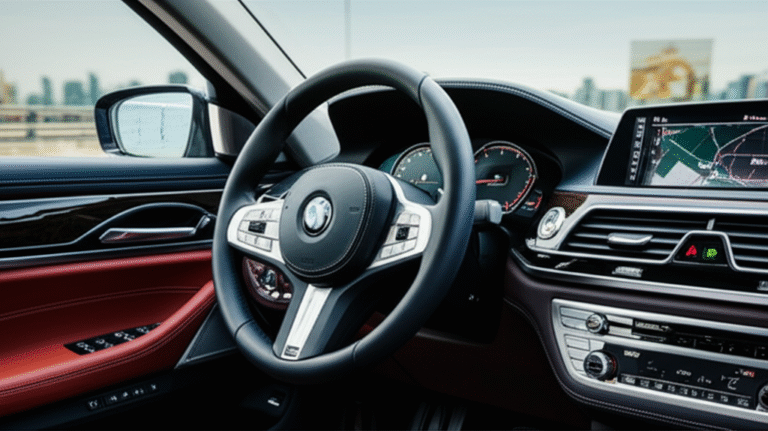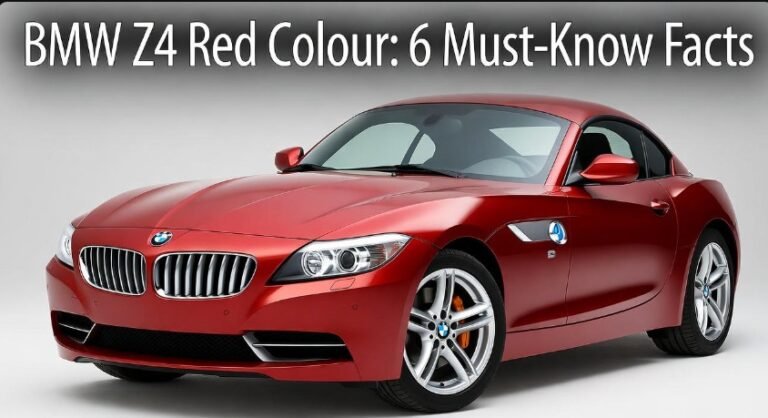BMW or Mercedes or Audi: 7 Stunning Comparisons

Choosing between a BMW, Mercedes-Benz, or Audi? This guide breaks down 7 stunning comparisons, highlighting performance, luxury, technology, and more to help you decide which German automotive icon best fits your lifestyle in the USA.
In This Article
- 1 Key Takeaways
- 2 BMW vs. Mercedes vs. Audi: A Heritage of Innovation
- 3 1. Driving Dynamics and Performance: The Thrill of the Drive
- 4 2. Interior Design and Luxury: Craftsmanship and Comfort
- 5 3. Technology and Infotainment Systems: Staying Connected
- 6 4. Safety Features and Ratings: Protecting What Matters
- 7 5. Reliability and Maintenance: Long-Term Ownership
- 8 6. Resale Value: The Long-Term Investment
- 9 7. Brand Prestige and Lifestyle: What’s Your Statement?
- 10 Making Your Choice for the USA
- 11 Frequently Asked Questions (FAQ)
- 11.1 Which brand is generally more reliable: BMW, Mercedes-Benz, or Audi?
- 11.2 Are BMW, Mercedes-Benz, or Audi cars more expensive to maintain?
- 11.3 Which brand offers the best technology features?
- 11.4 Which car is best for long-distance driving: BMW, Mercedes-Benz, or Audi?
- 11.5 Which brand is sportier: BMW, Mercedes-Benz, or Audi?
- 11.6 What are the primary differences in brand image?
- 11.7 How do these brands compare in terms of safety?
Key Takeaways
- Compare luxury, performance, and technology.
- Understand brand philosophies: BMW (driving dynamics), Mercedes (comfort), Audi (technology).
- Evaluate interior quality and design.
- Explore safety features and ratings.
- Consider maintenance costs and reliability.
- Discover resale value trends for each brand.
Deciding between the titans of German luxury—BMW, Mercedes-Benz, and Audi—is a common dilemma for car enthusiasts and everyday drivers alike. Each brand boasts a rich heritage and a reputation for engineering excellence. You might feel overwhelmed by the choices, wondering how to truly differentiate them. What makes one stand out over the others for your unique needs? This guide is designed to cut through the confusion. We’ll take a detailed look at seven key areas where these automotive giants shine, making it easier for you to understand their distinct advantages. Get ready to explore the nuances that define each luxury marque and find the perfect fit for your driving experience in the USA.
BMW vs. Mercedes vs. Audi: A Heritage of Innovation
For decades, BMW, Mercedes-Benz, and Audi have been at the forefront of automotive innovation, each carving out a distinct identity within the luxury segment. These brands are not just cars; they are statements of engineering prowess and sophisticated design, deeply ingrained in the global automotive landscape and particularly cherished in the US market. BMW, often associated with the “Ultimate Driving Machine,” emphasizes performance and dynamic handling. Mercedes-Benz, a name synonymous with luxury and comfort, focuses on refinement and prestige. Audi, known for its “Vorsprung durch Technik” (Progress through Technology), champions cutting-edge design and advanced electronics. Understanding this core philosophy for each brand is the first step in appreciating their differences.
1. Driving Dynamics and Performance: The Thrill of the Drive
When it comes to raw driving engagement, BMW has traditionally held the crown. Their engineering philosophy prioritizes a connected feel between the driver, the car, and the road. This often translates to sharper steering, a more responsive suspension, and a rear-wheel-drive bias (though many models now offer xDrive all-wheel-drive). The iconic M performance division takes this a step further, creating some of the most exhilarating sports sedans and coupes on the market. Think of models like the BMW 3 Series or the M3 for a true taste of dynamic prowess.
Mercedes-Benz, while capable of dynamic performance, typically leans towards a more refined and comfortable driving experience. Their focus is on effortless cruising, smooth power delivery, and a serene cabin. Even their AMG performance models, while incredibly potent, often retain a degree of plushness and composure that prioritizes long-distance comfort. The Mercedes-Benz E-Class or the S-Class exemplify this balanced approach, offering powerful engines within a supremely comfortable package.
Audi strikes a compelling balance, often praised for its exceptional all-wheel-drive system, quattro. This system provides outstanding grip and stability in various conditions, making Audi models feel planted and secure, especially in less-than-ideal weather often encountered across the USA. While not always as raw as a BMW, Audi offers a refined yet engaging driving experience, particularly in their S and RS performance variants. Models like the Audi A4 or the A6 with quattro offer a confident and capable drive.
| Brand | Driving Focus | Strengths | Example Models |
|---|---|---|---|
| BMW | Sporty, Driver-Centric | Agile handling, responsive steering, powerful engines, engaging feel | 3 Series, 5 Series, M3, M5 |
| Mercedes-Benz | Comfortable, Refined, Luxurious | Smooth ride, quiet cabin, effortless power, sophisticated luxury | C-Class, E-Class, S-Class, AMG GT |
| Audi | Balanced, Secure, Tech-Forward | Quattro all-wheel-drive, stable handling, modern performance, technological integration | A4, A6, A7, RS5 |
2. Interior Design and Luxury: Craftsmanship and Comfort
Step inside any of these German luxury cars, and you’re greeted with a palpable sense of quality. However, their approaches to interior design differ.
BMW interiors often reflect their driver-focused ethos. They are typically well-appointed, ergonomic, and prioritize the driver’s control and access to information. Materials are high-quality, and the design is usually functional yet sophisticated. While luxurious, there’s a sense of purposeful design that supports the driving experience. Expect intuitive layouts and premium finishes that enhance the feeling of being in command.
Mercedes-Benz is arguably the benchmark for outright cabin luxury and opulence. Their interiors are designed to envelop occupants in comfort and elegance. Think plush materials, ambient lighting, exquisite detailing, and a sense of grandeur. The focus is on creating a sanctuary, a space where occupants can relax and enjoy the journey. The S-Class, in particular, is renowned for setting new standards in automotive luxury interiors. Many find Mercedes interiors to be the most traditionally luxurious.
Audi interiors are often lauded for their modern, minimalist, and technologically advanced aesthetic. They blend high-quality materials with sharp, clean lines and cutting-edge digital displays. The Virtual Cockpit, Audi’s fully digital instrument cluster, is a standout feature that offers customizable information and a futuristic feel. Audi interiors feel precisely engineered and exude a sophisticated, understated luxury. They often feel like a high-tech lounge.
Pro Tip: When evaluating interiors, pay attention to tactile feedback – how do the buttons feel? How soft is the leather? Does the dashboard feel solid or creaky? Small details often differentiate true luxury.
3. Technology and Infotainment Systems: Staying Connected
In today’s connected world, a car’s technology suite is as important as its engine. All three brands offer sophisticated infotainment systems, but their user interfaces and feature sets vary.
BMW’s iDrive system has evolved significantly over the years. It’s known for its logical menu structure, often controlled via a rotary dial on the center console, touchscreen, and voice commands. It’s generally considered user-friendly and offers seamless smartphone integration with Apple CarPlay and Android Auto. BMW also offers advanced driver-assistance systems (ADAS) and head-up displays.
Mercedes-Benz uses its MBUX (Mercedes-Benz User Experience) system, which is highly praised for its natural voice control capabilities (“Hey Mercedes”) and stunning visual presentation, especially with its large, widescreen displays. The system is intuitive and offers a rich array of features, from navigation to connectivity. Mercedes also leads in advanced safety and driver assistance technologies, often debuting them first.
Audi’s MMI (Multi Media Interface) system, often paired with the aforementioned Virtual Cockpit, is another strong contender. It offers a clean interface, often controlled via a touchpad or rotary dial, with crisp graphics and logical navigation. Audi’s integration of technology feels seamless and sophisticated, often focusing on a cohesive user experience across their digital displays and control surfaces. You can learn more about advanced driver-assistance systems from resources like the National Highway Traffic Safety Administration (NHTSA) here: NHTSA Driver Assistance Technologies.
| Brand | Infotainment System | Key Features | Ease of Use (General) |
|---|---|---|---|
| BMW | iDrive | Rotary dial, touchscreen, voice control, Apple CarPlay, Android Auto | Very good, intuitive with learning curve |
| Mercedes-Benz | MBUX | Voice control (“Hey Mercedes”), large displays, advanced graphics, touchscreen | Excellent, highly natural voice commands |
| Audi | MMI | Virtual Cockpit, touchscreen, touchpad, clear graphics, Apple CarPlay, Android Auto | Excellent, clean and logical interface |
4. Safety Features and Ratings: Protecting What Matters
Safety is paramount in any vehicle, and these German luxury brands excel in providing comprehensive safety and driver-assistance technologies. They consistently earn top safety ratings from organizations like the Insurance Institute for Highway Safety (IIHS) and NHTSA in the US.
BMW offers a suite of active safety features, including forward collision warning, automatic emergency braking, blind-spot monitoring, lane departure warning, and adaptive cruise control. Their body structures are designed for maximum occupant protection in the event of a collision. BMW’s approach is to assist the driver and prevent accidents where possible.
Mercedes-Benz is often at the forefront of pioneering safety innovations. Their PRE-SAFE® system, for instance, can detect an imminent collision and prepare the vehicle by tightening seatbelts, adjusting seats, and closing windows. They offer a vast array of advanced driver-assistance systems that are known for their smooth and effective operation. Mercedes is committed to making driving as safe and stress-free as possible.
Audi also equips its vehicles with a full suite of advanced safety features. Their systems are known for their subtle yet effective intervention. Features like adaptive cruise assist, active lane assist, and pre-sense systems work together to enhance driver awareness and provide protection. Audi’s quattro system itself contributes to safety by improving traction in challenging conditions.
You can check specific safety ratings for any model on the IIHS website: IIHS Crash Test Ratings.
5. Reliability and Maintenance: Long-Term Ownership
When considering a luxury vehicle, potential ownership costs, including reliability and maintenance, are crucial factors. Historically, German luxury cars have been perceived as being more expensive to maintain than their mainstream counterparts. While this can be true, modern reliability has improved across the board.
BMW has shown improved reliability in recent years, though some complex systems can still be costly to repair if issues arise outside of warranty. Regular, scheduled maintenance is key to keeping a BMW running optimally and preserving its performance. Parts and specialized labor can be more expensive than for non-luxury brands.
Mercedes-Benz also demands diligent maintenance. While generally reliable, the advanced technology and luxury features can lead to higher repair bills should something go wrong. Owning a Mercedes-Benz often means investing in its upkeep to ensure its longevity and continued refinement. Some owners opt for extended warranties or pre-paid maintenance plans.
Audi models are also known for their sophisticated engineering, which can translate to higher repair costs. However, their reliability ratings have been competitive, especially in recent models. Like BMW and Mercedes, they benefit greatly from consistent and professional servicing. The quattro all-wheel-drive system is robust but requires proper fluid changes.
When it comes to maintenance costs in the USA, all three will generally be higher than a Toyota or Honda. However, the value derived from their performance, luxury, and technology often justifies this for buyers. Researching specific model year reliability through sources like Consumer Reports can be very helpful.
6. Resale Value: The Long-Term Investment
The resale value of a luxury car is an important consideration for many owners, especially those who tend to trade in their vehicles every few years. Depreciation is a factor for all cars, but some brands and models hold their value better than others.
BMW vehicles typically maintain strong resale values, particularly in popular models like the 3 Series and X5. Their reputation for performance and desirability among enthusiasts helps them hold their worth well in the used car market. Well-maintained BMWs are often sought after.
Mercedes-Benz also tends to have strong resale values, especially for its core luxury sedans like the C-Class, E-Class, and the flagship S-Class. The enduring appeal of the three-pointed star and the perception of lasting quality contribute to their strong market presence. However, highly complex or niche models might depreciate faster.
Audi has seen significant improvement in its resale value over the years, often closely tracking BMW and Mercedes-Benz. Models like the A4 and Q5 are popular and tend to hold their value well. The brand’s increasing popularity and reputation for technology and design have bolstered its standing in the pre-owned market.
Factors like mileage, condition, maintenance history, and accident history play a significant role in the resale value of any vehicle. For these German brands, a consistent service record from authorized dealerships can add considerable value.
7. Brand Prestige and Lifestyle: What’s Your Statement?
Beyond the tangible aspects of a car, the intangible element of brand prestige and the lifestyle it represents plays a massive role in luxury car purchasing decisions.
BMW often appeals to drivers who value performance, handling, and a slightly sportier, more dynamic image. It’s often seen as a brand for the engaged driver who enjoys the act of driving itself. The “Ultimate Driving Machine” slogan resonates with an active, often younger, demographic in the luxury space.
Mercedes-Benz exudes an aura of established luxury, comfort, and success. It’s a brand often associated with achievement, refinement, and a desire for the best in comfort and prestige. The three-pointed star is universally recognized as a symbol of automotive excellence and status.
Audi presents a modern, sophisticated, and tech-savvy image. It attracts buyers who appreciate cutting-edge design, advanced technology, and a sense of understated, intelligent luxury. It appeals to those who value innovation and a clean, contemporary aesthetic.
Consider what message you want your vehicle to convey. Are you driven by performance? Do you prioritize ultimate comfort? Or are you drawn to the latest technological advancements?
Making Your Choice for the USA
Choosing between BMW, Mercedes-Benz, and Audi in the USA is a delightful challenge, offering three distinct paths to luxury, performance, and advanced technology. Each brand excels in different areas, catering to a diverse range of driving preferences and lifestyles.
- Choose BMW if: You prioritize agile handling, a spirited driving experience, and a car that feels connected to the road.
- Choose Mercedes-Benz if: You seek unparalleled comfort, a smooth and effortless ride, and the pinnacle of traditional automotive luxury and prestige.
- Choose Audi if: You are drawn to sophisticated technology, a modern and clean design aesthetic, and the confidence of quattro all-wheel-drive.
Ultimately, the best way to make your decision is to test drive the models that interest you most from each brand. Pay attention to how each car makes you feel, how its technology integrates into your daily routine, and how its comfort levels suit your typical drives, whether it’s navigating city streets in New York or cruising the highways of California.
Frequently Asked Questions (FAQ)
Which brand is generally more reliable: BMW, Mercedes-Benz, or Audi?
Recent data suggests that reliability is quite comparable across all three brands, with models often scoring similarly. However, individual model years and specific powertrains can vary. It’s always best to research the reliability ratings for the specific model and year you are considering through resources like Consumer Reports or J.D. Power.
Are BMW, Mercedes-Benz, or Audi cars more expensive to maintain?
Generally, all three brands fall into the luxury segment, meaning maintenance and repair costs can be higher than for non-luxury vehicles. Parts and specialized labor are typically more expensive. However, the cost can vary by model and complexity; sometimes, a well-equipped Audi might have similar or even lower maintenance costs than a comparable Mercedes-Benz, for instance.
Which brand offers the best technology features?
This is subjective and depends on what you value. Mercedes-Benz MBUX is often lauded for its voice control and visual flair. Audi’s Virtual Cockpit and MMI integration are praised for their seamlessness and modern feel. BMW’s iDrive is known for its logical layout and comprehensive features. All three offer cutting-edge infotainment, safety, and driver-assistance technologies.
Which car is best for long-distance driving: BMW, Mercedes-Benz, or Audi?
Mercedes-Benz is often considered the benchmark for long-distance comfort due to its focus on plush ride quality and a serene cabin. However, both BMW (especially models like the 5 Series and 7 Series) and Audi (with their stable platforms and comfortable interiors) are also excellent choices for extended journeys. Test driving is crucial to determine personal preference.
Which brand is sportier: BMW, Mercedes-Benz, or Audi?
BMW is most consistently associated with sporty handling and a driver-centric feel, particularly its M models. Audi offers sporty performance through its S and RS models, often combined with quattro grip. Mercedes-Benz’s AMG models are incredibly powerful and fast, though they may retain a slightly more luxurious and composed feel compared to a similarly sized BMW M car.
What are the primary differences in brand image?
BMW often represents performance and driving engagement. Mercedes-Benz embodies traditional luxury, comfort, and prestige. Audi signifies advanced technology, modern design, and sophisticated engineering.
How do these brands compare in terms of safety?
All three brands are leaders in automotive safety and consistently receive top ratings from organizations like IIHS and NHTSA. They offer a comprehensive suite of advanced driver-assistance systems and robust passive safety structures. It’s more about the specific features and how they are implemented than a significant difference in overall safety performance.
Choosing between BMW, Mercedes-Benz, and Audi is a journey into the pinnacle of automotive engineering. Each offers a unique blend of performance, luxury, and technology, reflecting decades of German innovation and a commitment to the driving experience. Whether you are a resident navigating American roads, an expat new to the local automotive scene, or a traveler considering a rental or purchase, understanding these core differences empowers you to make an informed decision. Ultimately, the “best” brand is the one that aligns perfectly with your personal preferences, driving needs, and lifestyle. By considering these seven stunning comparisons, you’re well on your way to finding your ideal German luxury automobile.






